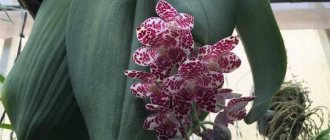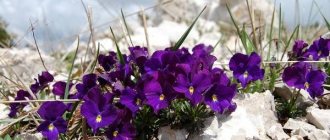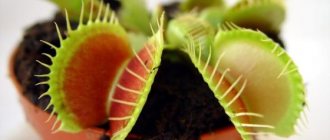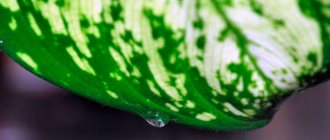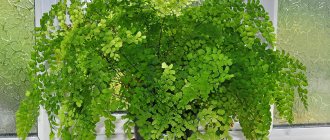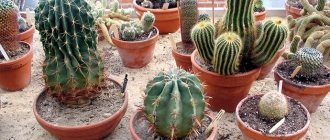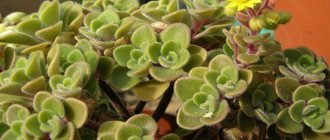Every person brings home a pot of orchid in the hope of rapid growth and constant flowering.
But the presence of pests on a plant can not only worsen the appearance of the plant, but also lead to its complete death.
Therefore it is important:
- Detect them in time;
- Determine the type of pest;
- And treat the plant with an appropriate insecticide.
Let's find out in more detail how to treat an orchid against pests.
Origin and appearance of the cymbidium orchid
Back in 1800, a botanist from Sweden discovered a new species of orchid - cymbidium. In nature, this surprisingly unpretentious plant can be found in Thailand, Burma, and Australia. I can’t even believe that such a wonderful flower grows on rocks, sand and just trees. There are more than fifty varieties of orchids, some grow in the tropics, and others that are not afraid of the harsh climate of the Himalayan mountains.
Cymbidium is an epiphytic plant
Cymbidium is a genus of evergreen epiphytic plants of the Orchidaceae family. The appearance is now familiar to everyone; you will not confuse this flower with any other. The color scheme of the petals can be very diverse - from pure white to various shades of lilac. Pseudobulbs are located tightly to each other, at their base there are peduncles. The number of buds varies from 1 to 5–7. There are specimens with more than 10 flowers on their peduncles. Their diameter reaches 12–13 cm.
Is it difficult to keep at home?
Keeping a cymbidium orchid at home cannot be called easy; the plant needs certain conditions. A beautiful flower requires special attention and compliance with the rules of care.
Growing cymbidium at home is not very easy.
Kinds
There are a great many varieties of cymbidium orchids, but their maintenance and care are the same. What types are most common among amateur gardeners and are well studied by specialists?
- Cymbidium is wonderful. An orchid growing in China, Thailand, and Vietnam. The oblong elongated leaves are rich green, the flowers are not very large, the maximum size rarely exceeds 8 cm. The color of the petals is light pink, with small scarlet spots. The flowering period lasts from February to May.
- Giant Cymbidium. Was found in India. It got its name because of its rather long leaves, the size of which exceeds half a meter, and a large inflorescence bearing from 10 to 15 flowers. The color of the petals is greenish-yellow, with purple-red stripes. Blooms from November to April. Does not require special care, very unpretentious.
- Cymbidium Tracy. This type of orchid is common in Burma. The leaves of the plant reach 60 cm, and the flowers are very large, about 15 cm in diameter. The color of the petals is light yellow with small red spots. Blooms from September to January. Requires high humidity and frequent spraying.
- Cymbidium miniature . This name speaks for itself. A small orchid that can win the heart of a gardener. Gracefully hanging clusters of small, about 2 cm, flowers create the impression of airiness and transparency. Few orchid lovers will be able to pass by this magnificence. It also grows in a wide range of temperatures: from moderately cold to warm. It begins to bloom in August.
- Lanceolate Cymbidium. Grows in Asia. This species has small flowers of light green color with a red stripe in the center, reaching a diameter of 5 cm. This orchid has wide and long leaves, glossy, rich green.
Amazing varieties of cymbidium - photo gallery
Cymbidium is wonderful - an unpretentious orchid with beautiful peduncles
The magnificent flowers of giant cymbidium reach a diameter of 15 cm
Delicate clusters of small Cymbidium miniature flowers
The original Tracy Cymbidium flowers cannot be confused with any other species.
Cymbidium lanceolate - inhabitant of rocky terrain
What you need to know when choosing cymbidium
When going to a flower shop, you need to know how to choose a healthy plant, which in the future will only delight you with its beauty. Of course, you need to pay attention to the beauty of flowers. But that's not important. The main thing is to distinguish a healthy specimen from a sick one, and also take into account several aspects:
- An orchid is a child of the tropics, and if the outside temperature approaches 0ºC or drops below, this is not the best time to purchase a delicate flower. Even a short stay at such a low temperature can be detrimental to an orchid. Therefore, it is better not to take risks and postpone the purchase to a warmer time of year.
- Very often you can see in large supermarkets free-standing shelves with a wide variety of colors. Here they rarely receive proper care. And they get sick much more often than those sold in flower shops, greenhouses and greenhouses. That is why it is better to find specialized stores or centers in advance and go shopping where you can get not only a healthy flower, but also a full-fledged consultation with a specialist.
It is best to buy an orchid in a store
- Consider whether it is worth buying a plant that blooms profusely. Do not forget that it spends a lot of energy on the growth of flower stalks; flowering exhausts the orchid. And she still has to move into your apartment, adapt to the new atmosphere, temperature and humidity. All this may be beyond the capabilities of a profusely blooming orchid and it may get sick, even if you purchased an absolutely healthy plant. This does not mean that you need to buy a young plant that is not flowering. It's best to settle on the golden mean. Either the flower stalks have just begun to bloom, or there are only a few of them.
- Before purchasing an orchid, look carefully at how firmly it is planted in the pot. Very carefully, at the very base of the stem, move the plant slightly. If this happens, it means it was recently replanted and it has not yet had time to catch its roots on the soil. It is not advisable to purchase such a plant. Immediately look at the roots. Since the orchid is planted in transparent pots, this is not difficult to do. They should be elastic, not wrinkled or dry. Have a light green or white color if the flower sits in a dry substrate. If it has been recently watered, the color of the roots may be dark green. Neither gray nor brown should be present. Don't worry if your orchid's roots are hanging out of the pot. This is just normal. The main thing is that they are alive. The root system is the most important part, which not only supplies the plant with moisture, but also participates in the process of photosynthesis.
- Pay attention to the orchid leaves. If the leaves are dense, elastic, without damage and have the same shape, this is a good sign. If you notice any stains or scratches, then it is better not to take such plants, as the orchid will need a lot of strength to recover. Look at the growth points. They must not be damaged.
It is advisable to avoid purchasing orchids with damaged leaves.
Basic mistakes
You will not need to work on mistakes and miscalculations if you follow the recommendations for growing roots and create optimal conditions for the orchid.
And yet, why don’t the roots grow:
- Be sure to treat the cuts with activated carbon. You can also use fungicides to avoid infections;
- Without proper lighting, it is difficult to grow roots at home. This is sometimes forgotten. Especially in winter;
- Do not remove leaves that are fading or beginning to turn yellow. They still have reserves of nutrients necessary for a weakened plant.
Planting and transplanting
It is advisable to replant the cymbidium orchid every 3 years. Transplantation is done after flowering has ended. If the plant is healthy, bloomed well, and is properly cared for, then each green bulb produces 1–2 babies per season. The main point of reproduction is just good care. If it is there, then there will be no difficulties with division.
Cymbidium is replanted infrequently - once every 3 years
What soil to choose
The ideal soil for Cymbidium orchids is the bark of coniferous trees. Why conifers? Because this type of orchid loves acidic soil, and this is precisely what the crushed bark of coniferous trees provides.
If you decide to make the substrate yourself, then the ratio of the component parts is as follows:
- 3 parts pine bark,
- 2 parts sphagnum moss,
- 1 part sand
- 1 part perlite
- 1 part charcoal.
There is no urgent need to make this planting mixture yourself. Nowadays, any flower shops sell ready-made soils for orchids. Feel free to use them.
The pot should not be large in volume, otherwise the plant will “fatten”, growing a large leaf mass, but not bloom. The size of the planting pot should be slightly larger than the orchid's root system.
When is it time to replant?
How do you know if it’s time to transplant an orchid into a new pot or if it’s not time yet? Everything is very simple. Look at the center of the plant pot. If the greenery around the edges is very thick, and the roots fill the container so much that it is impossible to insert a pencil, then the time has come to replant the flower.
This orchid needs a transplant
Step-by-step transplant
- Remove the cymbidium from the pot.
- As a rule, the roots of a transplanted plant grow strongly together. To unravel them, you need to lower the plant into a container of warm water.
- In the middle of the root system you can see dry roots that are gray in color or rotten ones that are soft and black.
They need to be removed with a sharp knife. This must be done carefully and carefully so as not to damage the young root system. Dry and damaged roots are removed - After removing everything dry and rotten, you need to leave the orchid for 10 minutes so that the wounds, sprinkled with activated carbon or cinnamon, dry.
- Pour drainage into a new pot, and lay fresh substrate on top, in a layer of at least 3 cm.
- Then you need to put the plant in a pot, carefully placing the roots among the substrate, which should be moistened by this moment.
- The cymbidium transplanted into a new container is placed in a dark place, here it will take root and recover from stress.
On the bark
There are other less common rooting methods. One of them is the bark method. For this you will need a fairly large piece of pine bark. If the bark was not purchased in a store, but was brought from the forest, it must be disinfected before use. To do this, place it in a container of water and boil for an hour. Once cooled, it can be used.
If the bark is purchased and is in a dry state, soak it in water for several days before using it. Rooting an orchid on dry ground will not work.
The process of rooting on the bark consists of the following stages:
- The pre-prepared orchid is carefully fixed on a piece of bark. In this case, its base must touch the surface.
- The root collar is treated with a solution of vitamin B 1.
- It is not necessary to spray or water the orchid during the rooting process. The moisture in the bark is enough for her.
On average, the process of root formation on the bark lasts about 3 months. During this time, the bark will have to be re-soaked. After the roots have developed, the plant can be immediately planted in its usual substrate.
So we found out how you can help an orchid grow roots. Of course, this does not always work out. To increase your chances of success, the most common mistakes made by novice gardeners are discussed below.
Secrets of care
The health of the orchid depends on proper care.
How to water correctly
This process has its own characteristics. They practice 2 types of watering - soldering and immersion.
- When using the immersion method, the pot with the plant is placed in a container filled with water. The pot should be in liquid almost to the very top. The entire procedure takes 40–45 minutes. During this time, the substrate is thoroughly impregnated with water.
Watering orchids using the dipping method
- The second method is soldering. It differs from the first one in that the plant is placed in an empty container and watering is carried out from above. So we moisten until the water reaches almost to the top of the pot. The substrate is completely wetted very quickly, in 10–15 minutes. After such watering, the plant can not be disturbed for about 10 days.
How to find out about the need to water an orchid? Since this flower is usually planted in transparent pots, it is easy to determine the moment when the plant needs watering. As soon as the condensation on the inner walls of the pot disappears, the roots lose their greenish color, become light and silvery, this is a signal that it is time to water the plant.
It is very important to properly water the cymbidium orchid, since the health of the plant depends on this and whether it will please its owners with flowering. In summer and winter, the frequency of humidification is different. In winter, as a rule, there is little light and plant development slows down. Accordingly, watering is carried out less frequently.
When watering, it is very important to ensure that water does not get into the axils of the leaves covering the pseudobulb. If even a drop of moisture gets there, you need to remove it with a paper napkin, which will absorb the liquid, or simply tilt the plant and the water will drain.
Seasonal watering table
| Season | Water temperature | Number of waterings |
| Spring | 25º-27ºС | Once every 7–8 days |
| Summer | 25º-27ºС | Once every 7–8 days |
| Autumn | 25º-27ºС | Once every 10–12 days |
| Winter | 26º-30ºС | Once every 14–15 days |
Bloom
Some cymbidiums bloom in spring, others in summer, and others in autumn or winter.
The total time depends on:
- variety (type) of orchid;
- number of peduncles and flowers;
- temperature;
- lighting intensity.
In general, for the group, the duration of flowering varies from 6 weeks to 3 months.
Blooming cymbidiums react poorly to both very bright (direct) sun and too dark conditions. Flowers (buds) begin to dry out and fall off.
High air temperatures also contribute to the rapid aging of flowers, so it is highly not recommended to keep plants during the flowering period at temperatures above + 22 °C.
What to do if the leaves turn yellow, the base begins to rot and other care errors - table
Yellowing leaves indicate improper care
A beginning florist has many questions, the answers to which do not always come on time. And the owner of a wonderful plant makes mistakes. If yesterday the orchid was healthy, and today you notice leaves turning yellow or starting to turn black, do not rush to panic. It is not necessarily a disease or some pest that is killing your plant. Most likely, these are symptoms of improper care. What mistakes do the owners of these flowers make? Let's look at some of them.
| Error | Cause | Elimination |
| Shriveled, yellowing leaves with pinpoint damage |
|
|
| Yellowing and rotting of pseudobulbs |
|
|
| Yellowing of leaves |
|
|
| Blackening of leaf tips |
|
|
| Curling leaves |
|
|
Lighting
In general, cymbidiums tolerate direct sun and only hybrids based on Cymbidium devonianum (have wide leaves) acquire a yellowish tint.
South and west windows work well . The suitability of the eastern side must be tested experimentally.
If the growing of the plant lasts more than 9 months , then there is not enough sunlight and you need to use artificial light lamps or move it to a more illuminated place.
Good lighting is most important during the period of growing peduncles , buds and during flowering , since its fluctuations (sharp decrease) disrupt the supply of new cells with water, and the flowers fall off and the peduncles dry out.
Diseases and pests
Unfortunately, orchids have quite a lot of diseases. It is affected by fungal and bacterial rot. It is very important to know the signs of the disease, this will help you choose the right treatment. Pests do not often visit cymbidium, but they can still cause a lot of problems.
Causes of appearance, control measures and prevention - table
| Pest diseases | Symptoms | Reason for appearance | Control measures and prevention |
| Black rot | The affected tissues turn black. The source of infection quickly spreads to healthy tissue. If the disease is neglected, the orchid may die. | Low temperature combined with high humidity of the substrate and air. |
|
| Cymbidium mosaic | Chlorotic spots and streaks appear on the leaves, which are located parallel to the central vein. Gradually they become more defined and darken. The orchid begins to lag behind in growth, the intensity of flowering decreases. | Improper care and pest damage weakens the plant. |
|
| Anthracnose | Clearly defined brown spots appear on the leaves, gradually growing and connecting with each other. | High temperature and humidity. |
|
| Shchitovka | Brown tubercles appear on the plant. The pest greatly slows down the growth of the orchid because it feeds on its juices. | Low air humidity. Temperature too high. |
|
| Aphid | These sucking parasites settle on the back side of the leaf. A plant affected by aphids is weakened and can be infected with viral diseases. |
|
How to recognize diseases and pests - photo
Black rot on cymbidium Anthracnose on an orchid leaf
Cymbidium mosaic is a dangerous and insidious disease
Scale insects slow down the growth of orchids
Aphids weaken the orchid by sucking out nutrients
Reanimation of an orchid without roots
If you suddenly get your hands on an orchid with or without rotted roots, do not rush to throw away the plant, it can be saved.
- Cut off any rotten roots. Cut off the blackened areas completely, down to healthy green tissue. Pre-disinfect the knife or scissors you use - boil or wipe with alcohol. It is important that the growing point with leaves remains intact. If the rot has not yet reached it, then the plant can definitely be saved.
- Treat all sections with crushed activated carbon, rubbing it into the tissue of the damaged plant. Let the orchid come to its senses, leave it alone for a few days.
- During this time, try to purchase any foliar food for orchids, for example, Dr. Foley Orchid. And start spraying the preserved foliage of the plant with it. And spray the cut where the roots should appear with warm water with a few drops of succinic acid.
- Cymbidium without roots should be fixed in a container with damp moss or bark. Place in a warm place (temperature 25ºС).
An orchid without roots needs to be firmly secured so that it does not wobble.
- Don't expect quick results. It may take months for roots to appear. But we want to save the plant. Therefore, we must be patient.
There is another method that can be used to grow roots from a damaged plant. You need to hang the orchid with its leaves down in a closed container so that the place where the roots form is at the top. The vessel must be closed, in the form of a greenhouse. Spraying is carried out 2-3 times a week with warm water with the addition of root growth stimulants. With this method, water does not get into the axils of the leaves and does not cause rotting. The orchid is kept in this suspended position until roots appear.
Biological drugs
So how to treat an orchid against insects? Biological insecticides can be used to control most pests .
Biological agents can be used to control pests.
The main advantage is their safety, since the components in the composition are of natural origin. They:
- Not dangerous to humans or animals;
- Do not accumulate in plants;
- Do not cause pests to become addicted to the components.
It is better to use them when the orchid infection is at an early stage . Such drugs may not cope with more complex cases. To completely eliminate insects, it is better to carry out repeated treatments.
The basis of such drugs are :
- Mushrooms;
- Bacteria;
- And entomogenic nematodes.
Treatment with drugs should be carried out only in the evening . The ambient temperature should be that specified in the instructions for the drug.
Fungal-based insecticides have a pronounced neurotoxic effect . After the drug penetrates the insect's blood, it causes paralysis and then its death. On sale you can find:
- Mycoafidin;
- Pecilomycin;
- Verticillin;
- Metarizin.
The most convenient preparations for use are based on bacteria . They are available in powder form. While mushroom-based drugs can cause allergic reactions in humans, allergies to bacteria-based drugs are rare. The most common are:
- Fitoverm;
- Bicol;
- Biotlin.
The most effective drug today is Nembact, based on entomopagenic nematodes. They penetrate inside the pest’s body and stop its development phases. Complete death of pests occurs after a maximum of 3 days.
Reproduction
Cymbidium propagates in two ways - by dividing the bush and by seeds.
Dividing the bush
This is the easiest way to reproduce. It is combined with plant transplantation so as not to disturb the root system again.
- Remove the cymbidium from the pot.
- After cleaning, divide the plant into several parts, leaving on each divided plant several green bulbs and one brown, old one. It is in old bulbs that the cymbidium orchid retains useful substances, which it then uses in case of unfavorable conditions.
- Remove rotten and dry roots, sprinkle the cuts with charcoal and dry.
- Plant the cuttings in a suitable substrate. Spray, water moderately and keep in a warm place.
- The emerging young leaves will signal successful rooting.
How to grow roots on a Vanda orchid
If not cared for properly, Vanda loses its roots, and everyone needs to know how to build them up.
Often, if not properly cared for, the Vanda orchid loses some of its roots. In order to grow new roots, you need to remove the plant from the pot, rinse the root system with a fungicide solution at a temperature of about thirty degrees and dry. Then you need to remove all damaged roots and place the plant in a growth stimulator solution for ten minutes.
Taking a transparent pot, you need to fill it one-third with expanded clay and slightly moisten it. Wet sphagnum moss is laid on top of the drainage layer, in the center of which a depression is made, into which the prepared orchid is placed and covered with moss on top. The container with the plant is placed in a warm and well-ventilated room. The planting can only be moistened by spraying along the edge of the pot. Under favorable conditions, roots form a month after planting.
Cinnamon for plant damage
People use cinnamon for pain and itching, minor cuts and insect bites. These properties of the spice will also help in caring for outdoor and potted flowers. If the plant has been damaged (eg slightly broken) during care, cinnamon may help. The damage will heal faster, and fungal or bacterial diseases that often attack the affected areas will not develop. Such situations arise quite often, especially when caring for crops with long, hanging shoots (like many balcony flowers). Spraying the wound stimulates healing while preventing infection by fungal pathogens.
If a gardener propagates plants by dividing rhizomes (irises, echinacea, phlox, hostas), the break area should also be sprinkled with cinnamon. Its powder acts as a rooting agent and heals the wound.
Cinnamon against mildew in flower pots
In the case of abundant watering of plants or the use of overly fertile soil when growing, white or grayish mold often appears on the top layer (not to be confused with hard water sediment). As a rule, it is not particularly harmful to plants (it limits gas exchange only in extreme cases), but it looks unsightly and causes inconvenience to gardeners. This problem can be solved in a natural, non-invasive way for the home's space and environment. This is sprinkling the soil in a pot with cinnamon. Sometimes an action needs to be repeated several times. A good solution would be to mix cinnamon powder with the top layer of the substrate to make the treatment more effective.
It must be remembered that mold appears on the soil in pots for certain reasons, and they should be eliminated first of all. These may include: overwatering, excessive indoor humidity, too much plant density and lack of air flow.
Cinnamon powder for children's sandbox
If ants have gotten into your garden sandbox, you can drive the insects away by simply mixing the sand with a few packets of cinnamon powder. Before doing this, it is advisable to check how the child reacts to the smell of the spice. You can also wipe the sandbox body with cinnamon essential oil.
Note: Cinnamon oil is quite strong and you need to be careful not to get the substance on your skin in its pure form. You can dilute it with regular warm water. Also, cinnamon oil has an intense odor, so after treating the sandbox, it is better for the child not to play there for several hours.
Varieties of cinnamon
Many people associate cinnamon with an aromatic spice. It's worth knowing that there are two popular types of cinnamon: one is the properly prepared bark of a tree called Ceylon (Cinnamonum verum), the other is from the aromatic cinnamon tree, also known as Chinese cassia (Cinnamonum cassia). Culinary Ceylon cinnamon is considered more valuable and healthy, but the basic properties of both varieties are similar. They are also sold simply as "cinnamon", especially in powdered form.

